Who Controls the User Experience? AMD’s Carrizo Thoroughly Tested
by Ian Cutress on February 4, 2016 8:00 AM ESTBenchmark Results: Professional and OpenCL
Here are our results from our Professional and OpenCL tests. A reminder of our systems, including their graphics:
| System Overview | ||||
| µArch | APU + GPU | Memory | Channel | |
| HP Elitebook 745 G2 | Kaveri | A10 PRO-7350B (19W) R6, 384 SPs, 533 MHz |
8 GB | Dual |
| HP Elitebook 745 G3 | Carrizo | PRO A12-8800B (15W) R7, 512 SPs, 800 MHz |
4 GB | Single |
| Toshiba Satellite E45DW-C4210 |
Carrizo | FX-8800P (15W) R7, 512 SPs, 800 MHz |
8 GB | Single |
| HP Pavilion 17z-g100 |
Carrizo | A10-8700P (15W) R6, 384 SPs, 800 MHz |
8 GB | Single |
| Lenovo Y700 | Carrizo | FX-8800P (15W) R7, 512 SPs, 800 MHz R9 385MX, 512 SPs, 900-100 MHz |
16 GB | Single |
PCMark 08
PCMark08, developed by Futuremark, is a simple press play and run benchmarking tool designed to probe how well systems cope with a variety of standard tasks that a professional user might encounter. This includes video conferencing with multiple streams, image/file manipulation, video processing, 3D modelling and other tools. In this case we take the three main benchmark sets, Creative, Home and Work, and run them in OpenCL mode which aims to take advantage of OpenCL accelerated hardware. For fun we also put in the PCMark08 Storage workset.
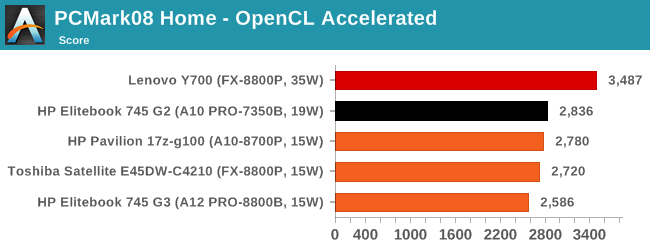
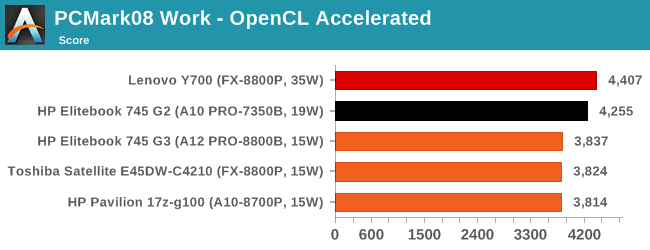
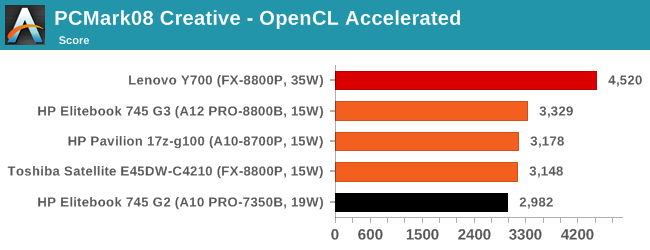
Both of the Home and Work tests show something starteling in the Kaveri system beating all the 15W Carrizo parts. This comes back to what we saw on WebXPRT on the last page – these workloads are very bursty in nature, requiring the system to wake up, run a small amount of work, and go back to sleep. It would seem that this requires a lot more effort from the Carrizo platforms than the Kaveri ones (perhaps by nature of the lower idle power draw starting point on Carrizo) which impacts time critical performance metrics.
If we take the CPU frequencies of the two Elitebook systems, starting with the 745 G2 (Kaveri)
Here the standard frequency tends to be in the 3300 MHz region, moving down to lower frequencies when more threads are needed. But for the 745 G3 (Carrizo):
Here the CPU frequency is obviously mostly at the 2500 MHz mark, sometimes bursting up to 3400 MHz (It’s actually more of a 2:1 split in favor of 2500 MHz).
You might argue that the temperature of the design might be to blame. Both Elitebooks are in the same chassis, so let us see:
(take note of the scales)
Here it shows the G2 wanting to stay below 60C, whereas the G3 is happy to go almost to 80C, albeit with an average temperature which is nearer 50C. This means that the G2 can arguably keep the higher frequencies for longer.
Just to weigh in on the other 15W Carrizo designs in the Toshiba Satellite and HP Pavilion:
In both cases, similar to the G3, the main frequency for the test is actually the lower 2500/2300 frequency, with the system moving up to the higher frequency state around a third of the time, rather than staying at the higher state and moving back down. This is what is causing the Kaveri system to win out in these sorts of workloads (though likely at a power penalty).
On the storage front, having a mechanical drive is a killer here.

Agisoft Photoscan
Photoscan is professional software that takes a series of 2D images (as little as 50, usually 250+) and 'performs calculations' to determine where the pictures were taken and if it can create a 3D model and textures of what the images are of. This model can then be exported to other software for touch-ups or implementation in physics engines/games or, as the reader that directed me to it, national archiving. The tool has four phases, one of which can be OpenCL accelerated, while the other three are a mix of single thread and variable thread workloads. We ran the tool in CPU only and OpenCL modes.
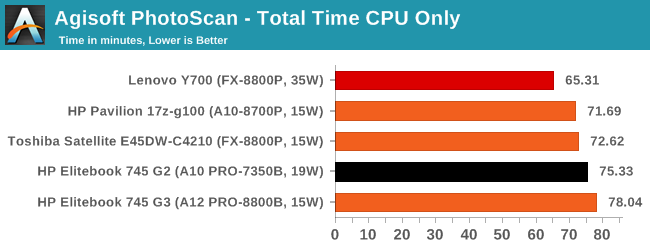
When pure CPU performance matters, having the higher thermal headroom matters most. But moving it to the OpenCL mode shows that those extra TDP points can matter a lot on load balancing:
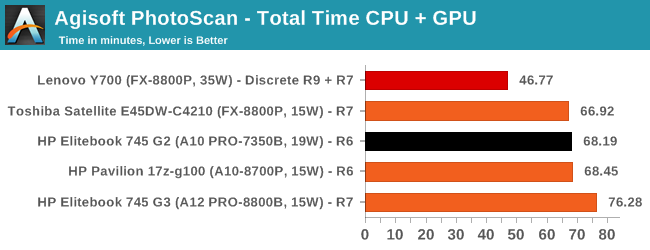
There are two things to note here. One, something seems to have gone very wrong with the G3, and I’m sure those numbers are erroneous and need to be re-run or the 4GB of memory is actually a hindrance here. The second is that the combination R7/R9 graphics in the Lenovo, despite not being in Crossfire, can both be used in OpenCL mode. This pushes a speed up of almost 30%.
Linux Bench
Linux Bench is a collection of Linux based benchmarks compiled together by ServeTheHome. The idea for this is to have some non-windows based tools that are easy enough to run with a USB key, an internet connection and three lines of code in a terminal. The tests in Linux Bench include standard synthetic compute, compression, matrix manipulation, database tools and key-value storage.
Unfortunately Linux Bench refused to run on any of the HP systems for relatively unknown reasons – the fact that it was all the HP models perhaps means that there is something firmware related which is causing the LiveCD to not boot properly. Nonetheless, the results are here for completeness.
| Linux Bench | ||
| Toshiba Satellite E45DW-C4210 (15W) |
Lenovo Y700 (35W) |
|
| C-Ray Hard Test / seconds | 365 | 267 |
| 7-Zip Compression MIPS | 5718 | 6110 |
| 7-Zip Decompression MIPS | 7320 | 9733 |
| NAMD (steps per time) | 1.72 | 2.46 |
| NPB MOPS (per sec per thread) | 365 | 321 |
| OpenSSL Sign | 220 | 296 |
| OpenSSL Verify | 13518 | 19465 |
| Redis 1 | 13210 | 12034 |
| Redis 10 | 41494 | 38760 |
| Redis 100 | 33445 | 31949 |






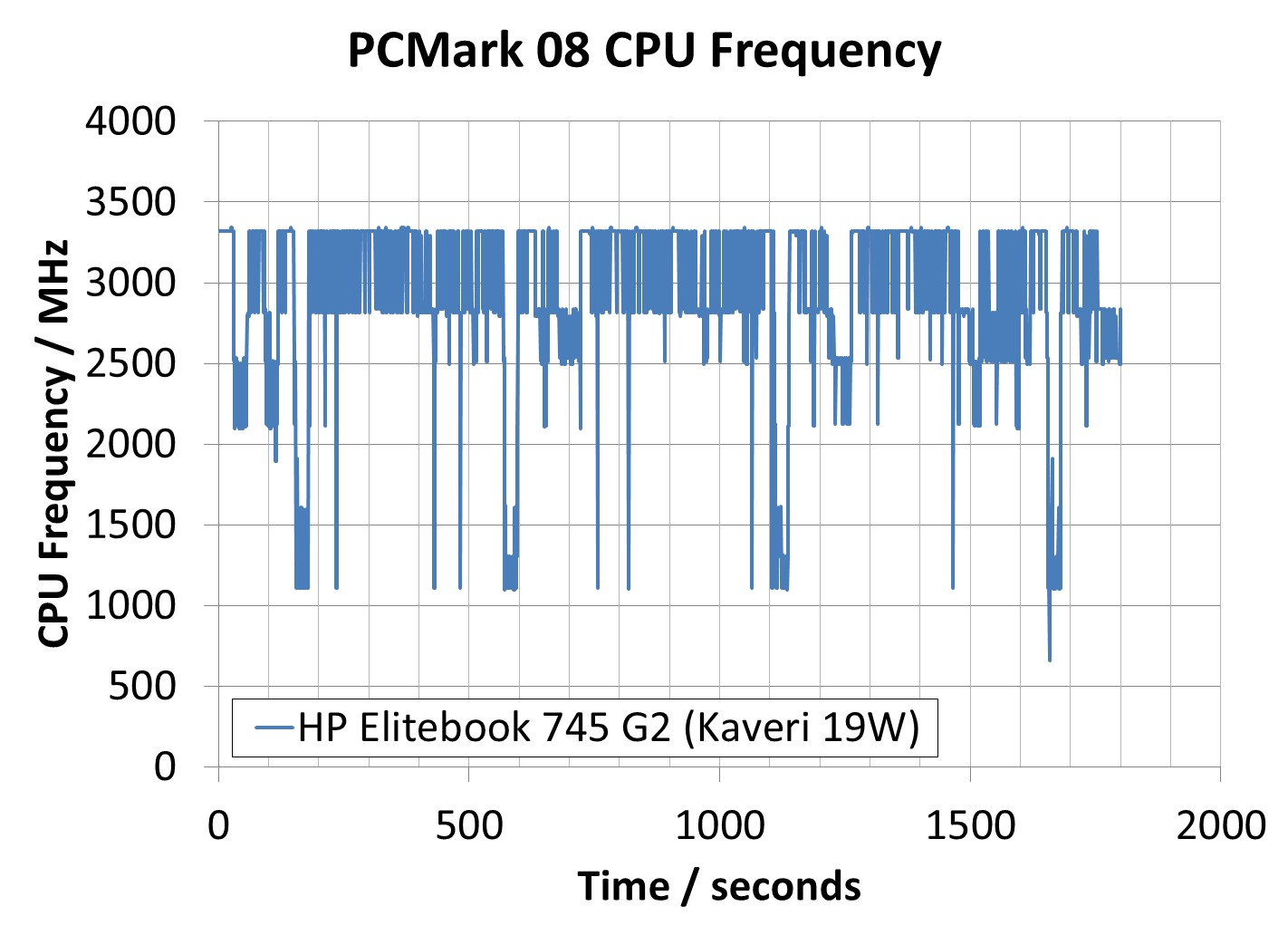

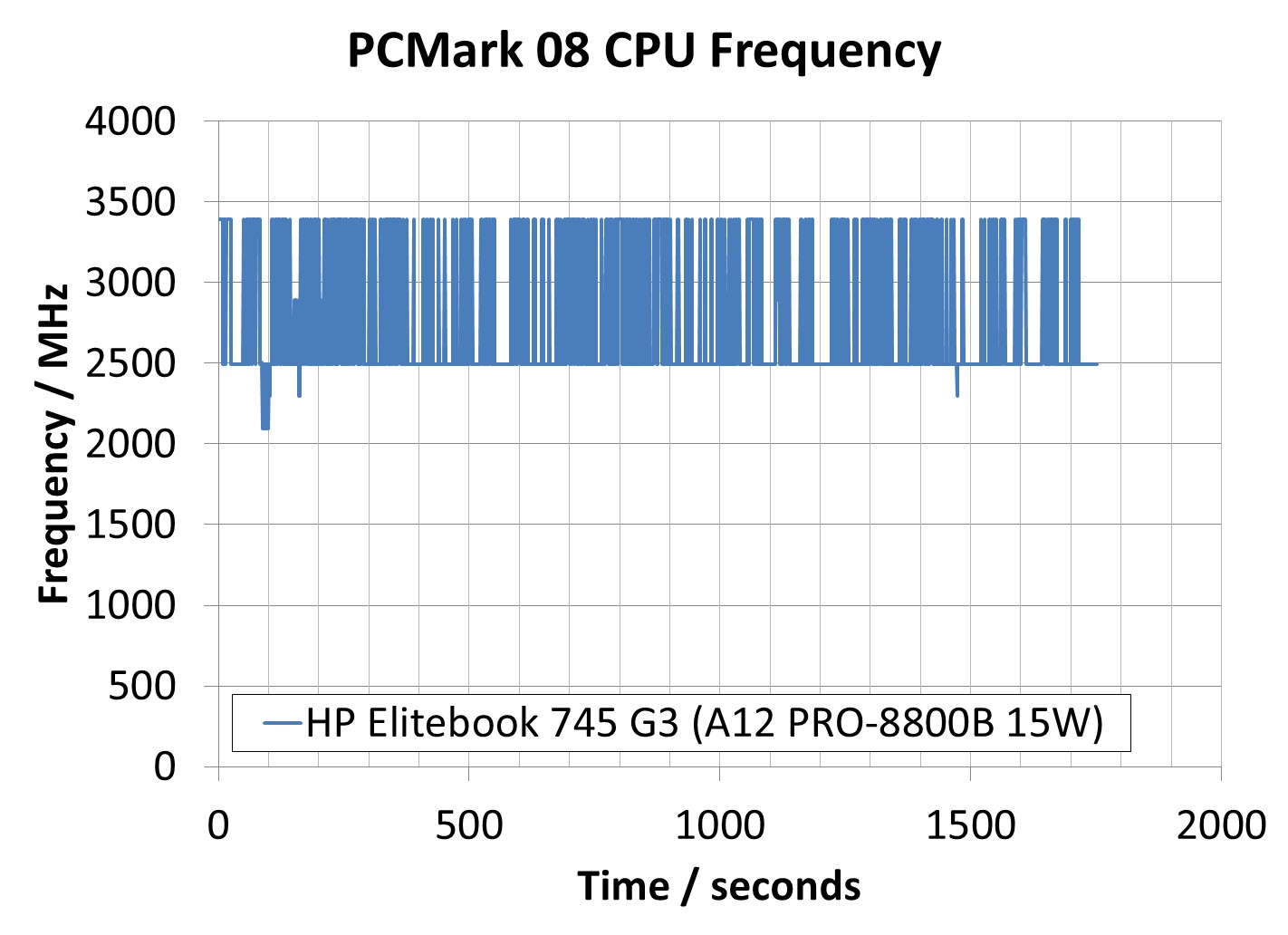
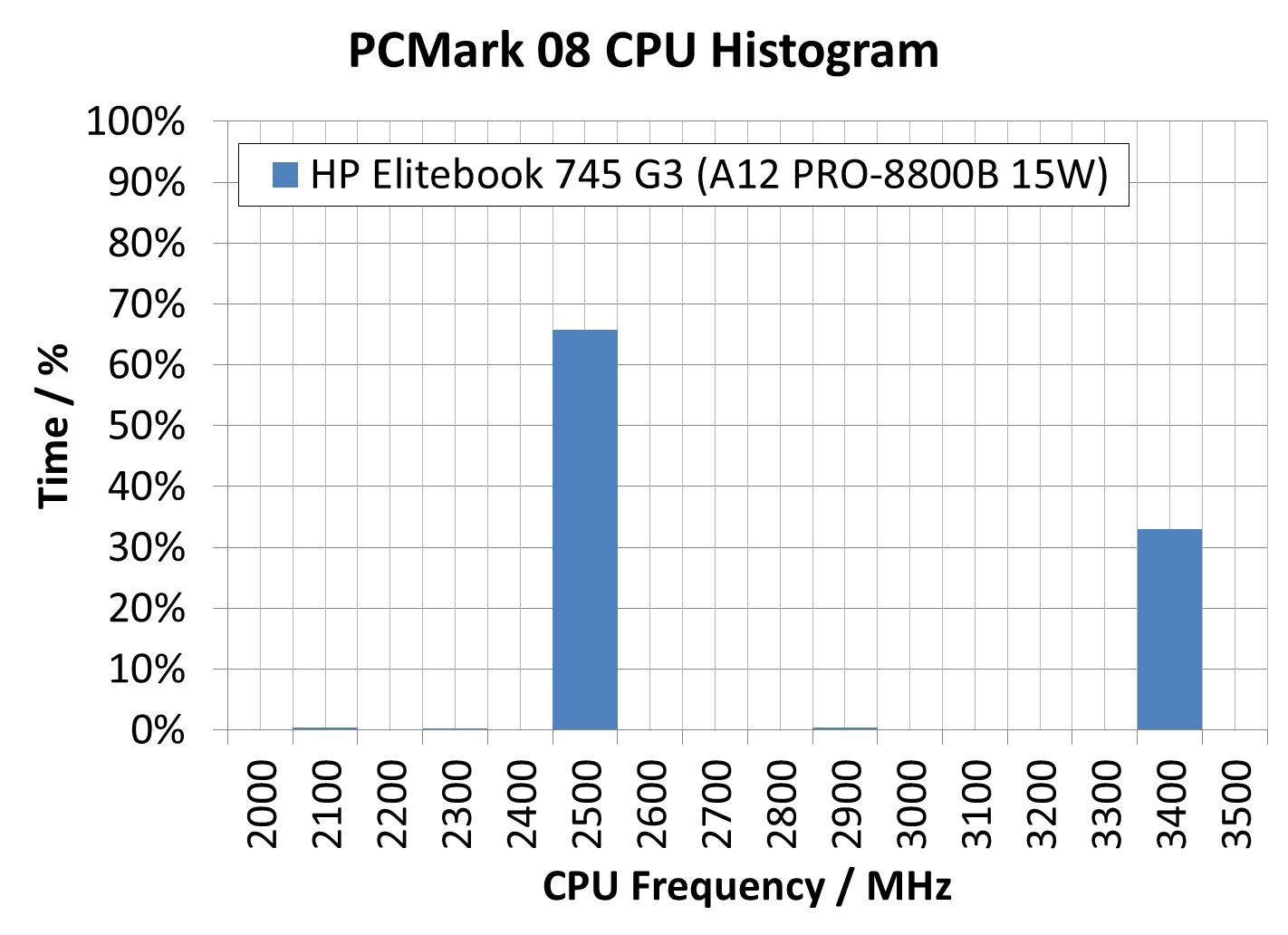

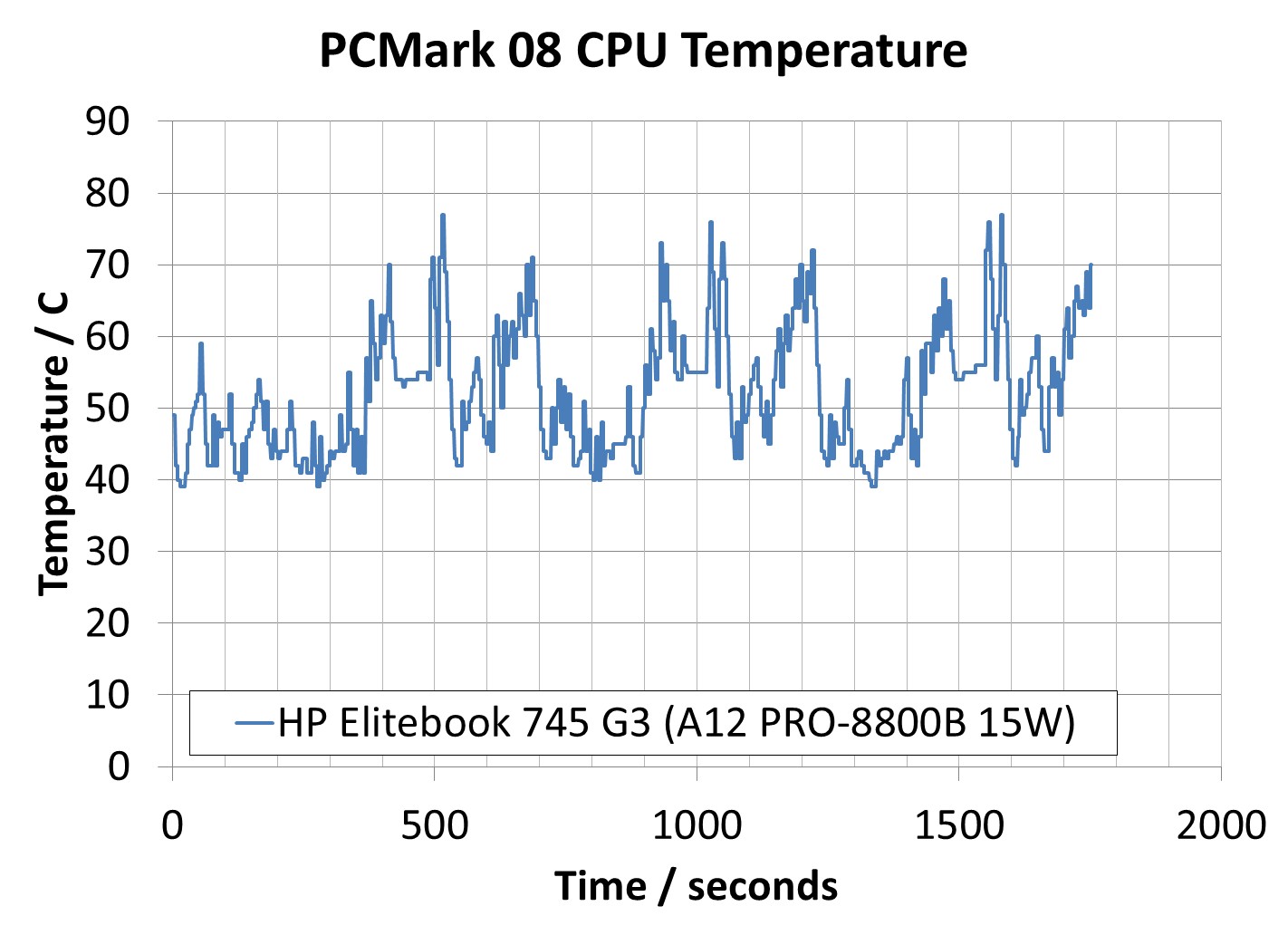










175 Comments
View All Comments
Ian Cutress - Friday, February 5, 2016 - link
It is. It was correct in the table :P fixed!Intel999 - Friday, February 5, 2016 - link
So what I had originally thought would be an advantage for Carrizo, the same motherboard for both Carizzo and Carizzo-L, turned out to screw AMD since OEMs refuse to provide any semblance of sufficient memory on the Carizzo non L chipsets.As for Zen, I can promise you that it will be a failure in laptop configurations if OEMs continue to reign it in with poor configurations such as single channel memory, HDDs and low quality screens.
The only way to get a quality AMD system in this day and age is to go to a custom PC builder and give him the specs you require. Unfortunately, 90% of PC consumers wouldn't know what specs to give the builder and I'm sure Intel has coerced a lot of custom builders to push their CPUs through kickbacks.
reepca - Saturday, February 13, 2016 - link
Could you name a custom PC builder that can build a laptop with Carrizo for me...? Or when you say "PC" do you mean "Desktop" (already gottaone)?junky77 - Friday, February 5, 2016 - link
My Y700 has 4GB of vRAM and GPU-Z show M385XAlso, no talk about DX12?
Bateluer - Friday, February 5, 2016 - link
Any idea when we'll see the X4 845 arrive for desktops?mrdude - Friday, February 5, 2016 - link
Amazing article, Ian! Took the better part of an hour to read it between chores and emails, but it was time well spent :)That said, I feel like one aspect regarding AMD's race-to-the-bottom has been ignored: AMD's own role in it. For decades, and with only a couple of notable exceptions, AMD has marketed itself as the cheaper alternative with 'good enough' performance. Well, unfortunately they've succeeded and this is the result. Carrizo processors on lagging nodes being sold, if only to decrease OEM investments, for dirt cheap and can only just compete with Intel's low end/mid-tier chips. If their engineers are proud of their efforts, then perhaps they need a reality check and take a look at those benchmarks. The APU is so lopsided and bandwidth starved that it should have never made it past the initial stages of design. (Why on earth are they selling 512SPs if they can't feed them? Is the company more worried about chewing up GloFo wafer commitments than designing a balanced design?)
For AMD to command more volume, higher profit margins, and dictate minimum design/spec requirements, AMD also has to start making class-leading products. 'Good enough' should never be uttered within corporate offices else risk being fired. Unfortunately, mediocrity has been the staple of AMD's CPU side for as long as I can remember. CEOs and chief architects have come and gone, and things still haven't changed. After the X2 derivatives of the A64/K8 the company admitted defeat, if not outwardly than certainly tacitly.
I'm not hopeful. Those days are long gone. It's been far too long since AMD has made something that has piqued my, or consumers', interest. They've got nothing but recent failures to point to. Unless Zen comes out and actually beats out Intel's comparable chips in cost, single-threaded, multi-threaded, and power consumption, every person within AMD should admit defeat. The goal is perfection, and personally it seems they still don't understand that.
wow&wow - Monday, February 8, 2016 - link
"they still don't understand that."Because the paychecks are automatically deposited, no feeling about whether having paychecks or not since having them is a given : )
Lolimaster - Friday, February 5, 2016 - link
AMD PLEASE, start selling mobiles devices under your brand.4 of 5 "design wins" shown here are complete sh*t, the Lenovo supposed to be at least decent got serious problems of throttling because they designed the cooling for a 15w TDP.
You're screwing yourself AMD letting OEM's troll you time and time again.
wow&wow - Friday, February 5, 2016 - link
A must read for AMD employees, particularly those who define, approve, or market products, tests needed for those : )thatthing - Friday, February 5, 2016 - link
my Lenovo y700 came with 8gb ram in two 4gb sticks. Sandra and cou z show duel channel. memory test is very similar to my desktop kaveri system with ddr1600. also my r9m385x has 4gb memory. amd's specs list it as 896 shader, which I would agree with as it performs like my 7790 in firestrike